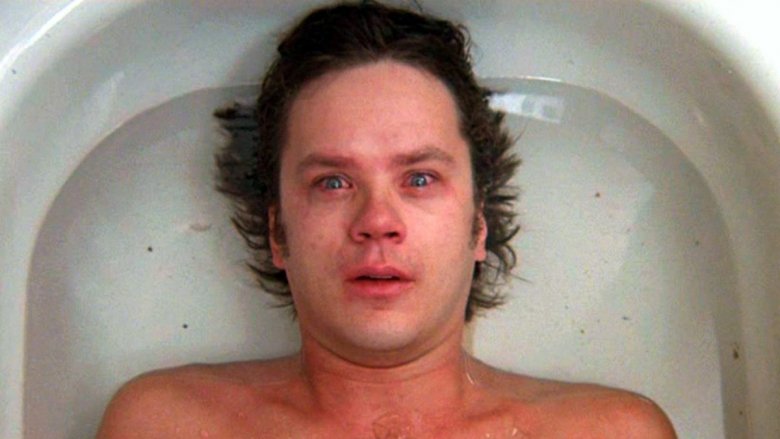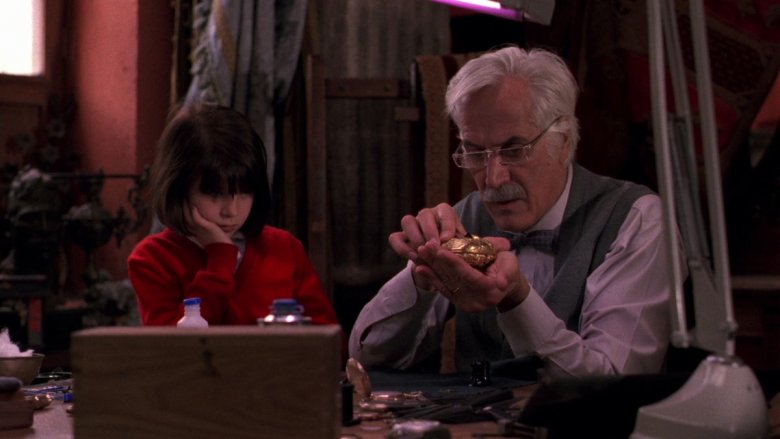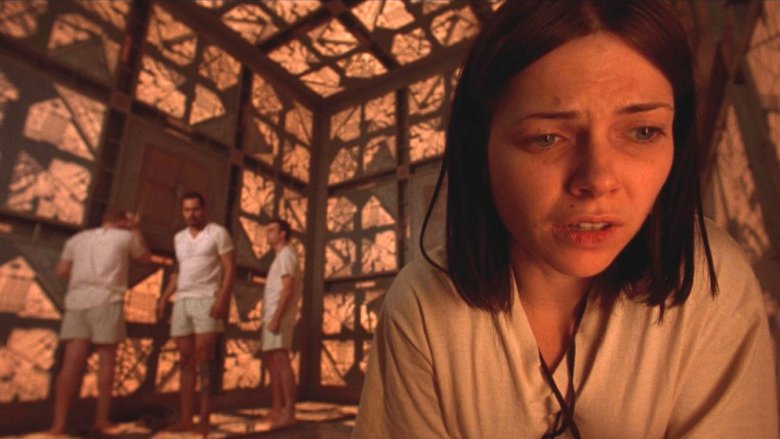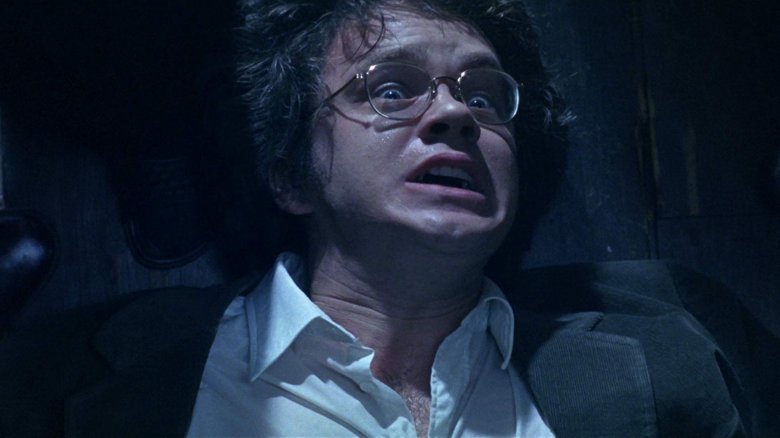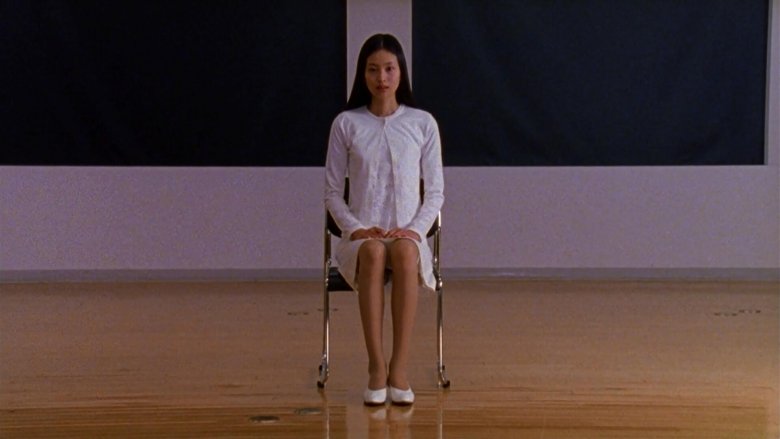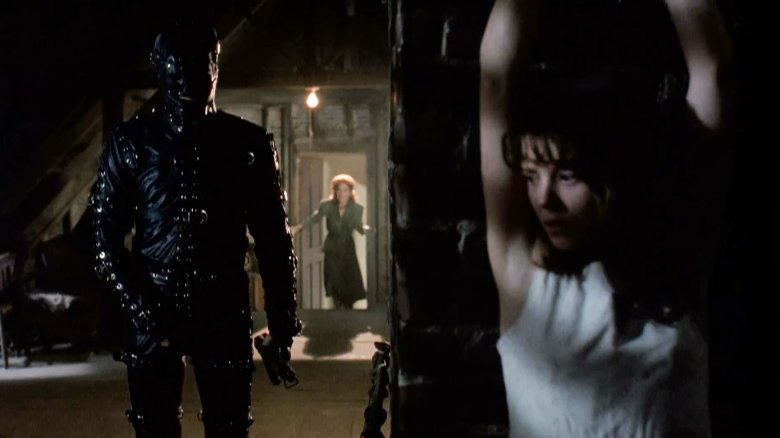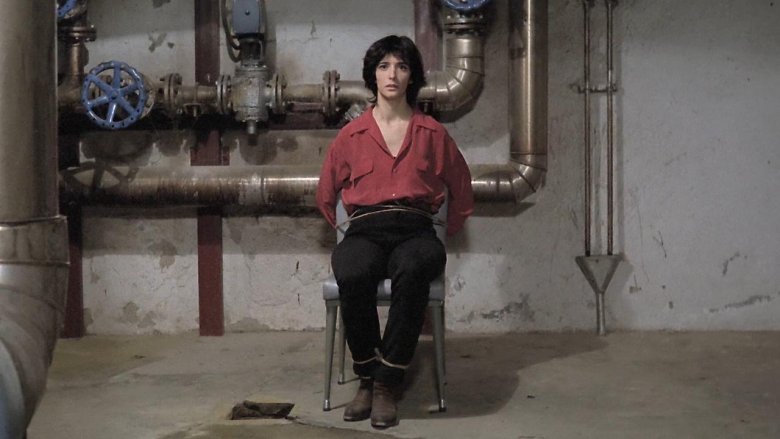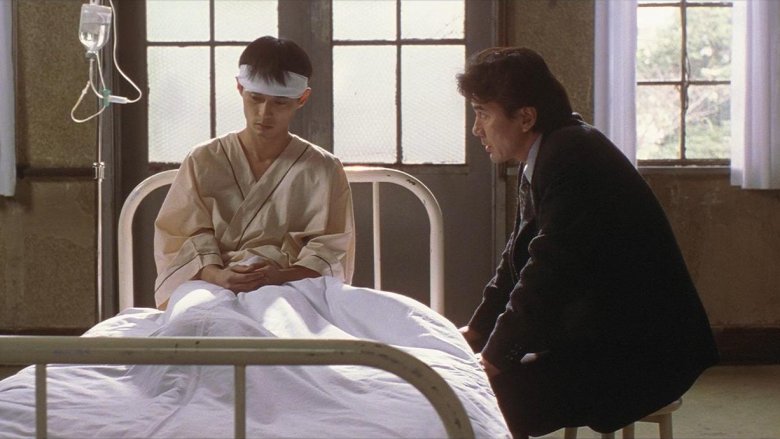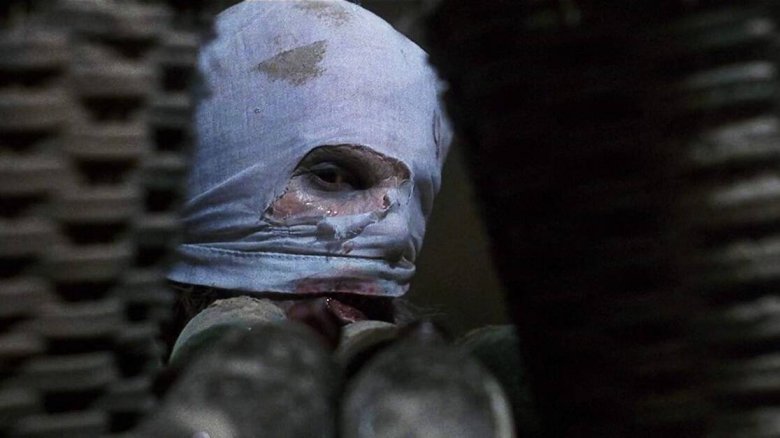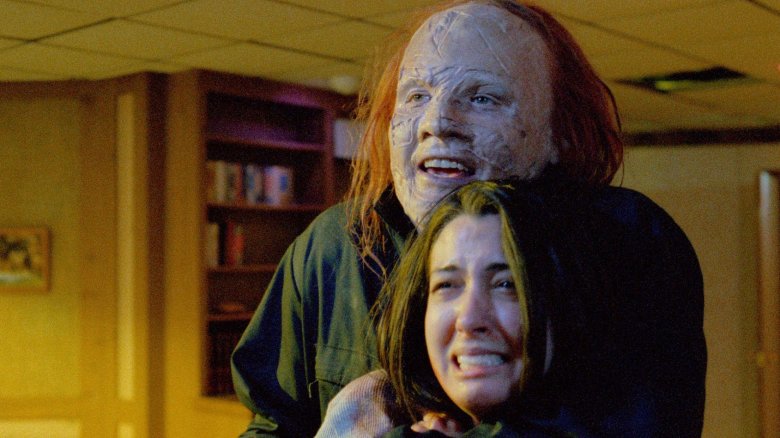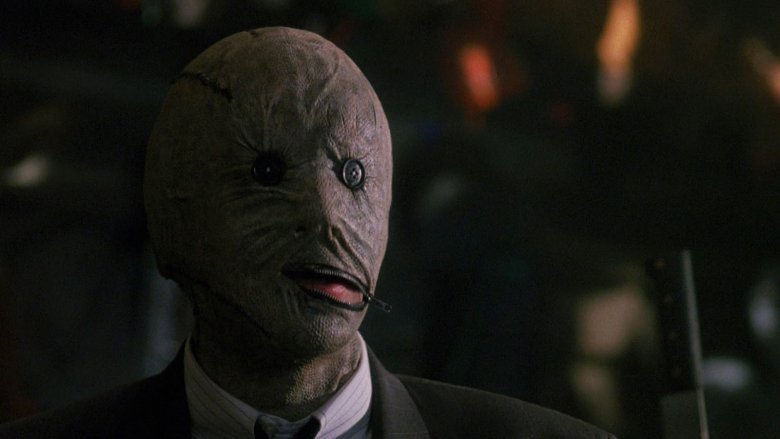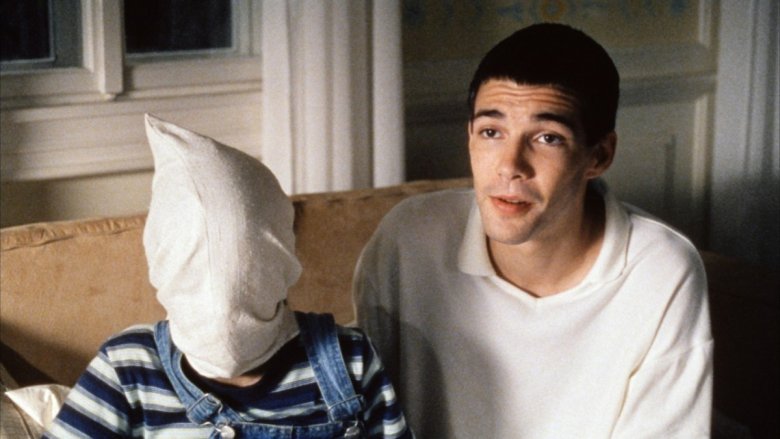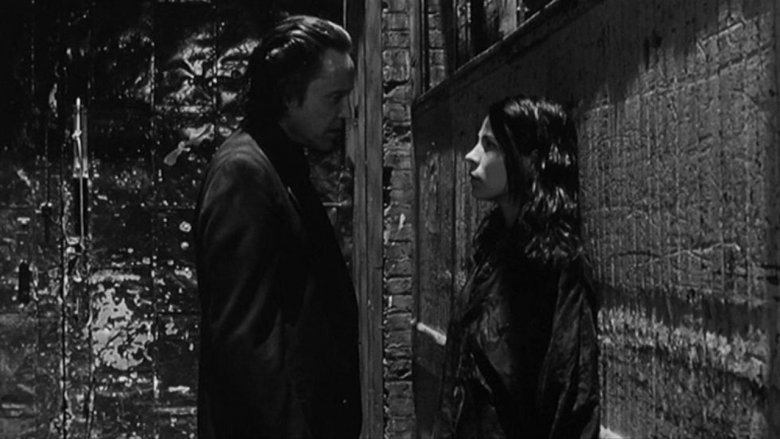Underappreciated '90s Horror Movies You Haven't Seen
After the growing trend of franchise milking in the 1980s, the '90s offered a little more originality for the tired horror genre. As the pattern of the gory slasher flicks fell to the wayside, the horror scene of the '90s grew to be a more eclectic place with a broader variety of scares. With big titles like The Sixth Sense, Sleepy Hollow, The Silence of the Lambs, and The Blair Witch Project hitting the big screen, horror fans had plenty to, ahem, Scream about.
Though many of the more significant '90s horror films are still widely celebrated, there's also a good chunk of underappreciated films that live in relative obscurity to this day. In the era before streaming and social media, finding some of these films (and people who also appreciated their grim offerings) was much more difficult. This sentiment rang especially true when it came to international genre entries.
But thanks to the technological wizardry of streaming, some of these underrated horror films can be given a second chance. From fantastical vampire flicks to meta (and murderous) movies, here's a list of some underappreciated '90s horror films you probably haven't seen and should definitely check out.
Cronos is a magical vampire tale from Guillermo del Toro
Written and directed by renowned filmmaker Guillermo del Toro, Cronos is one of his less talked about titles. The film's relative obscurity is probably a result of the film's limited release in the United States. When Cronos made its way to American audiences in 1994, the film opened in two theaters and would go on to show in only 28 theaters during its run in the United States. According to The Washington Post, 17 of those screens were located in Los Angeles, limiting the pool of potential viewers. Despite its low audience turnout, Cronos was very well-received among critics, and it currently holds a 90 percent critic score on Rotten Tomatoes.
The film begins in 1536, with an alchemist who creates an insect-like device that can grant its user eternal life. After his eventual death, the film flashes forward to the present where an antiques dealer named Jesús Gris finds the device hidden in one of his statues. After he accidentally injects himself with the contraption, Jesús begins to notice strange changes, such as his desire for blood. Along with these new developments, Jesús is pursued by a dying businessman, eager to use the device on himself.
Cronos may have underperformed upon its American debut, but the film is definitely worth a watch. With likable characters, mysterious artifacts, and a fun spin on the classic vampire formula, Cronos is sure to please both horror and del Toro fans alike.
Cube is a '90s sci-fi thriller with nasty surprises
Though the film has received a sizable cult following, Cube is a unique film worthy of even more widespread attention.
In this grisly horror flick, a group of strangers awakens to find themselves trapped in a massive cube-shaped puzzle with a seemingly endless number of small cube-shaped chambers inside. As the group navigates this maze, they must determine if the next room contains a deadly trap or if it's safe to enter. Without any food or water, the confused party must quickly find an exit, something that's much easier said than done.
The group members determine that each of them has a specific purpose that they believe can help them escape intact. For example, one person is a police officer, one is a mathematics student, and another is a doctor. Despite these specialized skills, tensions quickly begin to rise, leading to infighting, distrust, and baseless accusations. As the threat of violent death and starvation looms overhead, the group is quickly running out of time to escape the mysterious cube.
Outside of its premise, what sets Cube apart is its use of sci-fi themes and aesthetics. The Canadian film was shot with a low-budget, so the filmmakers had to get creative. For the vast majority of the film, only one set design is used, but by utilizing clever lighting techniques, the film never feels stale or lazy. Similarly, the repetitive looking rooms create a sense of claustrophobia and helplessness that works to the film's advantage.
Jacob's Ladder is an underrated horror film about the trauma of war
Jacob's Ladder is a psychological horror film originally released in 1990. The film begins in 1971 during the Vietnam War. Jacob Singer, a combat medic, and his unit are under attack, so Jacob runs into the forest in a panic, but he's stabbed with a bayonet before blacking out.
The film then changes gears, skipping forward to 1975. Jacob now works as a postal clerk and lives with his girlfriend, Jezebel. Though Jacob has taken steps to move on with life, he still misses his wife and children from his past marriage, namely his youngest son, who suddenly died before he went to war. Not only does Jacob suffer from familial woes, but he also has recurring war flashbacks and sees increasingly disturbing imagery in his day-to-day life. As the film progress, Jacob is convinced there's something the government is keeping secret about his experience in Vietnam, something that would explain his disturbing visions.
Jacob's Ladder is a fascinating story that delves into the psychological trauma of war and loss, as well as the threat of looming insanity. With conflicting information and progressively troubling delusions, it's difficult to discern what's real and what's fabricated inside Jacob's mind. Though the film is depressing, it's exceptionally written and well-executed. Jacob's Ladder is bound to leave viewers with a sense of unease that many other horror flicks could only hope to achieve.
Audition is a Japanese horror movie with a terrifying ending
After the death of his wife, Shigeharu Aoyama has been out of the dating game for many years and is noticeably lonely. Aoyama's concerned son urges his father to remarry, thus prompting a search for the perfect wife. Aoyama's film producer friend conjures up the idea of an audition for the ideal woman. Under the guise of auditioning for a new program, women begin pitching themselves to Aoyama. After reading the resume of a woman named Asami Yamazaki, Aoyama is enamored and immediately sets his sights on dating her.
However, something is off about Yamazaki, with Aoyama's friend discovering that her resume is full of holes. Undeterred, Aoyama pursues her, and after a few successful dates, the new couple seems to be doing well, so much so that Aoyama intends to propose. With things appearing to be progressing smoothly, Aoyama puts any doubts about Yamazaki aside, a mistake that he will surely regret.
Audition is a prime example of Japanese horror, offering a slow build-up that climaxes in a disturbing series of events. Yamazaki's transformation from a polite, meek woman into an eerie, cryptic figure is very well done, and is sure to send a shiver down your spine.
The People Under the Stairs is Wes Craven at his most comical
Wes Craven is undoubtedly one of the most well-known and respected names in horror. With plenty of big hits under his belt like A Nightmare on Elm Street and The Hills Have Eyes, Craven's work has had a massive impact on the genre. In the '90s, Craven's Scream reinvigorated the slasher genre, mainly by satirizing overplayed horror conventions. However, Scream isn't Craven's first horror title with a comedic slant.
The People Under the Stairs is a horror-comedy about a boy named Fool whose family is about to be evicted from their apartment. With his mother sick and unable to pay rent, Fool agrees to help rob the neighborhood's miserly white landlord.
Fool assists with the robbery, but he ultimately finds himself trapped in the Robinson home. While narrowly avoiding the crazy Robinson couple, Fool comes across Alice, an abused girl, locked inside the house. Even more horrifying, a group of stolen children is hidden under the stairs, living in darkness and kept alive by human flesh. Desperate to escape the house of horrors, Fool and Alice must avoid the murderous, blood-crazed Robinsons.
The People Under the Stairs is notable for its commitment to over-the-top action and fantastically campy performances. While the film isn't as grounded or even as horrific as some of Craven's better-known works, it's still an enjoyable watch in its own right.
Tesis is '90s film that goes down a dark path
Tesis, or Thesis, is a Spanish horror film that follows Ángela, a film student working on, you guessed it, her thesis. Her topic of study, audiovisual violence, requires her to view non-conventional works, namely snuff films. Because the content she seeks isn't exactly easy to find, Ángela asks her professor to find an example in the university's archives.
Ángela also turns to her classmate Chema for assistance. Known for his collection of graphic pornography, Chema introduces Ángela to the world of murder movies by showing her one from his collection. Now aware of the brutal nature of these films, Ángela returns to her university to find her professor dead in a screening room. Realizing he died watching the film she requested, Ángela steals the tape for herself.
When she and Chema view the tape, the pair discovers that the victim killed is one of their classmates, and the person who murdered her must be somewhere close. Now wrapped up in a crime that could threaten their lives, Ángela has more than just a thesis to worry about as she becomes a target for the dastardly director.
Trusting no one, Ángela's search to find the maker of the snuff film leads her on a tense and fraught journey. The narrative is structured to leave a few key questions unanswered with new dangers lurking around every corner. For viewers who want a gripping mystery that may frighten them away from pursuing a doctorate, check out Tesis.
Cure is a contemplative mystery
Cure is a Japanese horror film that's highly praised among critics but not necessarily recommended in casual conversation. The film begins with a mystery surrounding a string of similar, seemingly ritualistic murders. In each case, the murderer suffers from confusion and memory loss, leaving far more questions than answers. Police detective Kenichi Takabe alongside a psychologist named Sakuma, determines that there's actually just one murderer pulling strings, forcing others to kill through hypnosis.
Like many films about police detectives trying to solve a crime, the most engaging part of Cure is trying to piece together the motive of the killer. In exploring this, the film goes down a strange, unexpected path that ends the story on a contemplative note. Cure is a nihilistic and bleak film, and mixed with relatively slow-pacing, it can be challenging to watch. Though it may be tough to get through for some, the relentless atmosphere that builds up throughout the film is exactly what makes Cure work for others.
Castle Freak is a Gothic and gory treat
If you're into Gothic horror or just looking for a new sleep paralysis demon, Castle Freak might be the film for you.
After inheriting a 700-year-old castle from a previously unknown relative, John Reilly travels to Italy with his wife and daughter. Once the small family arrives in the massive castle, they begin to notice strange occurrences such as mirrors breaking and eerie echoes in the night. As the film goes on, John realizes that he and his family are in danger, as they aren't the only ones living in the castle.
Worthy of particular praise is the entire team behind Jonathan Fuller's depiction of the monstrous entity lurking within the castle. Everything from the creepy acting to the impressive array of makeup and prosthetics affixed to Fuller's body help to sell the character. The film features a multitude of gory practical effects, dark imagery, and an exceptionally terrifying antagonist, all of which makes Castle Freak a must-watch for any fan of the macabre.
Kolobos is a '90s horror movie that's lots of fun
Let's be honest. We don't always pick up a horror film expecting it to be good. In some situations, the cheesy, nonsensical horror films are best, especially when you're watching with a group of good-humored friends. If you're in the mood for a fun time, you'll want to look into Kolobos.
Kolobos is an independent horror flick released in 1999. While reviews are fairly average, Kolobos is definitely an interesting film. The movie begins when a couple comes across an injured woman who's then taken to the hospital. From here, the film cuts to a few days prior where the woman, an artist named Kyra, begins her three-month stay in a luxurious home as a participant in an experimental film. Along with the other participants, Kyra's every move is monitored and recorded as part of the filming process.
Things go wrong immediately when one of the five participants is killed, and the house goes on lockdown. Now believing they're being killed off as a sort of snuff film, Kyra and the others must find a way out of the Saw-esque house and figure out who's behind the murder.
Kolobos is a fun ride for people looking for a campy horror film that emits solid '90s vibes. So for anyone wanting to sit back and watch some good, old-fashioned slasher carnage unfold, Kolobos is an amusing watch.
Nightbreed is a deep dive into the mind of Clive Barker
After a series of brutal murders, Aaron Boone is suspected to be a serial killer by Dr. Decker, his psychiatrist. Because his dreams perfectly mimic the crime scene, the psychiatrist convinces Boone he's guilty and gives him 24 hours to turn himself in. Boone is then drugged, and in his unstable state, is hit by a truck and transferred to a hospital. There, he overhears a seemingly insane man ranting about a place called Midian, a surprising turn of events seeing how Boone has dreamed about this mythical location.
Boone then seeks out Midian and finds himself in a graveyard. Almost instantly, he's attacked by two monsters and bitten. Meanwhile, the police have traced Boone to the cemetery, and our hero is almost immediately killed by the cops. However, Boone's story doesn't end here. Because of the bite he received, he's reborn as a monster of Midian, known as Nightbreed.
Clive Barker's Nightbreed is an exciting horror title that also dabbles in both the action and fantasy genres. While there are many scenes typical of an average horror film, there are also plenty of moments featuring some epic action movie violence. (It also stars legendary horror director David Cronenberg as Boone's psychiatrist.) Additionally, Midian itself feels like something from another world, and the monster designs are all incredibly inventive, though deeply unsettling.
Funny Games is brutal, devastating, and meta
Released in 1997, Funny Games is an Austrian film directed by filmmaker Michael Haneke. The movie follows a wealthy family who travels to their lake home for a short vacation. Shortly after arriving, the family is visited by two strange men asking to borrow eggs. As the men become increasingly confrontational, the film quickly takes a nasty turn, and the family is held captive in their own home. As the hours roll by, the family is relentlessly subjected to physical and psychological torture.
What separates Funny Games from other entries of the home invasion sub-genre is the sheer brutality of the film. Camera shots are slow, and there's a noticeable lack of excessive movement or stylized elements, making for an uncomfortable and sickeningly realistic showing of events. The film is uncompromising in its cruelty, featuring extended acts of violence and bone-chilling performances from the actors.
Additionally, Peter and Paul, the men who invade the family's home, are horrifying psychopaths, mirroring the likes of Alex from A Clockwork Orange. With all of these elements in mind, Funny Games is a raw, sickening title that offers no distractions from wanton violence. Plus, the movie is meta in the most unusual and terrifying ways. So if you're looking for horror in its purest, cruelest form, Funny Games will be right up your alley.
The Addiction is a stark and gritty vampire flick
The Addiction tells the story of Kathleen, a philosophy student who's preyed upon by a vampire, thus giving her vampiric power as well. As Kathleen becomes more and more hungry for human blood, she finds herself luring and attacking those around her. Eventually, Kathleen's addiction to blood consumes her, effectively killing any humanity left inside her.
The Addiction was released in 1995, but the film is entirely in black and white, mirroring early vampire and zombie films. The overall look of the film is dark and gritty, which is the perfect choice for a vampire flick. The film's stark aesthetic is matched from intense acting by Lili Taylor and Christopher Walken, who briefly appears in a supporting role.
While many vampire tropes arise throughout the film, The Addiction is still a rather unique take on the vampire flick. Unlike other films in the genre, The Addiction draws parallels between drug addiction and a vampire's lust for blood. A similarly unique twist is the overt Catholic overtones, specifically the concept of religious redemption and rebirth in the context of vampirism.
